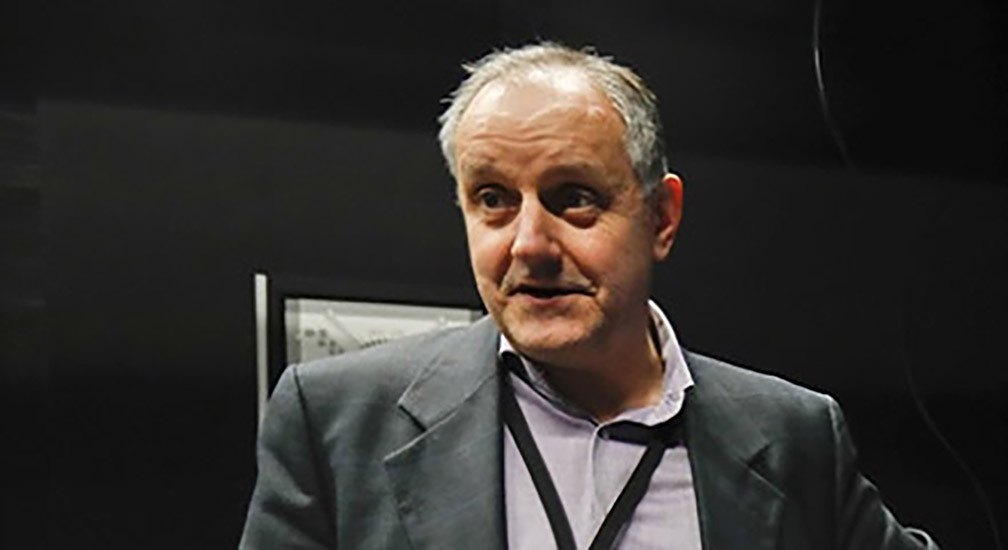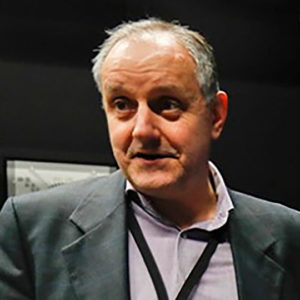Atanas Gotchev planned to stay in Tampere no more than six months. Almost 20 years later he is a professor in Tampere University of Technology, and one of the key figures in Tampere Imaging Ecosystem, the thriving business ecosystem that stimulates research and development activities of products and services related to digital imaging.

What is the main focus of your research?
– The focus is on immersive visual technologies empowered by signal processing. The aim is to deliver 3D visual information in such a realistic and interactive way that you can immerse in it, feel that you are there.
What kind of the challenges you are trying to solve?
– There are three main challenges. First, how to capture visual data using cameras, sensors for depth, colour and so on – but not too much of it. Second, how to process the captured data. Third, the biggest challenge is to visualise it for the human eyes.
– We want the visualisations to be as natural as possible: you can move around objects, go closer, focus and refocus, and the scene will change like it would in real life. For this we need to be able to process enormous amounts of data to recreate the whole light field. When you put the display near your eyes i.e. use glasses, this is quite easy to do – but everyone wants displays without glasses, and this is what we are aiming at.
What kind of changes your research is bringing about?
– More realistic and more interactive imaging is of course appreciated in the fields like entertainment and gaming. It also helps people who make important decisions based on visual information, for example operators of heavy work machines or people working in emergency response or control centres… anywhere, where full situational awareness is needed.
How about your team in TUT, the 3D Media Group?
– What I especially like in the team is the commitment: people are ready and willing to bring results and also to meet the deadlines that are sometimes really tight. We have people working in various academic and industry projects, for the latest news from our team, please visit our website at www.tut.fi/3dmedia.
– Our team is quite an international one, currently there are people from 8 countries – and so is the TUT Signal Processing Lab altogether, both professors and students. We get applications from around the world and we do appreciate the diversity this brings.
– When the PhD students of our team graduate and leave the team, they usually find very good positions. Our alumni have been working for example at Nokia, Apple, Intel, Huawei, Netflix…
What kind of research partners you have on the business side?
– We have a long history of good, expertise-building collaboration with Nokia. Now we have projects with for example Huawei. The company opened an R&D center in Tampere in 2016 and employed some of the local imaging experts – the same people we had already cooperated with earlier.
– Another one that I can mention is FIMA (Forum for Intelligent Machines ry), an industry driven network for mobile work machine manufacturers, specialist companies, system integrators and research institutes. It is a very fruitful partnership, they know what they want and we can deliver.
And how about cooperation with other universities?
– The two training networks that we are coordinating are very good examples of the kind of cooperation we prefer. We like to create and develop networks that make structured and well-funded basis for cooperation.
– First, there is the European Training Network on Full Parallax Imaging which brings together 8 beneficiaries and 8 partner organizations with the aim of training a new generation of researchers in the area of full parallax imaging. Second, the ImmerSAFE network with 9 beneficiaries and 5 partner organizations aiming to train a new generation of multi-disciplinary experts, who have an understanding of the core imaging technologies in the context of safety-critical applications.
Could you give us an example of some of your cutting edge achievements at the moment?
– Well, we have challenged researchers working in the area of light field imaging to develop algorithms for reconstructing densely-sampled light field from a sparse set of camera views. This challenge is part of the Grand Challenge Program of the IEEE International Conference on Multimedia and Expo 2018, and we wanted to arrange it in order to see, whether our algorithms are the best or is there someone who can do even better.
– In the future, one of the things we want to achieve is a holographic display. For that we need to convert light field into a holographic presentation. A difficult task, but very interesting.
How do you see the future?
– Future brings more challenges, and the spirit of the 3D Media Group is to never give up, do what we are asked to do, develop it even further and build excellence on top – how about that!
Author: Päivi Stenroos

Professor in the Tampere University of Technology (TUT), leading the 3D Media Group in the Laboratory of Signal Processing | Director of the Centre for Immersive Visual Technologies (CIVIT)